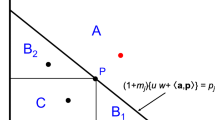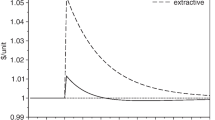Abstract.
This paper presents the problem of satiation of consumption and technology in relation to a model of evolutionary endogenous growth. The model represents an attempt to provide an evolutionary economic micro foundation to Pasinetti's scheme of the structural economic dynamics of an economy that is based on only labour and knowledge. The micro foundation is based on a set of rules that makes endogenous the demand coefficients, the labour coefficients, and the number of available sectors. Through process innovations firms increase their productivities with respect to individual goods, but a growth slowdown takes place unless the benefits from specialisation are exploited at still higher levels. Another cause for slowdown is related to an Engelian hierarchy of goods. As the standard of living grows, existing sectors and consumption goods satiate, so new sectors need to be provided by product innovations in a sufficient pace to keep up with the labour that is displaced from old sectors.
Similar content being viewed by others
Author information
Authors and Affiliations
Rights and permissions
About this article
Cite this article
Andersen, E. Satiation in an evolutionary model of structural economic dynamics. J Evol Econ 11, 143–164 (2001). https://doi.org/10.1007/PL00003852
Issue Date:
DOI: https://doi.org/10.1007/PL00003852




